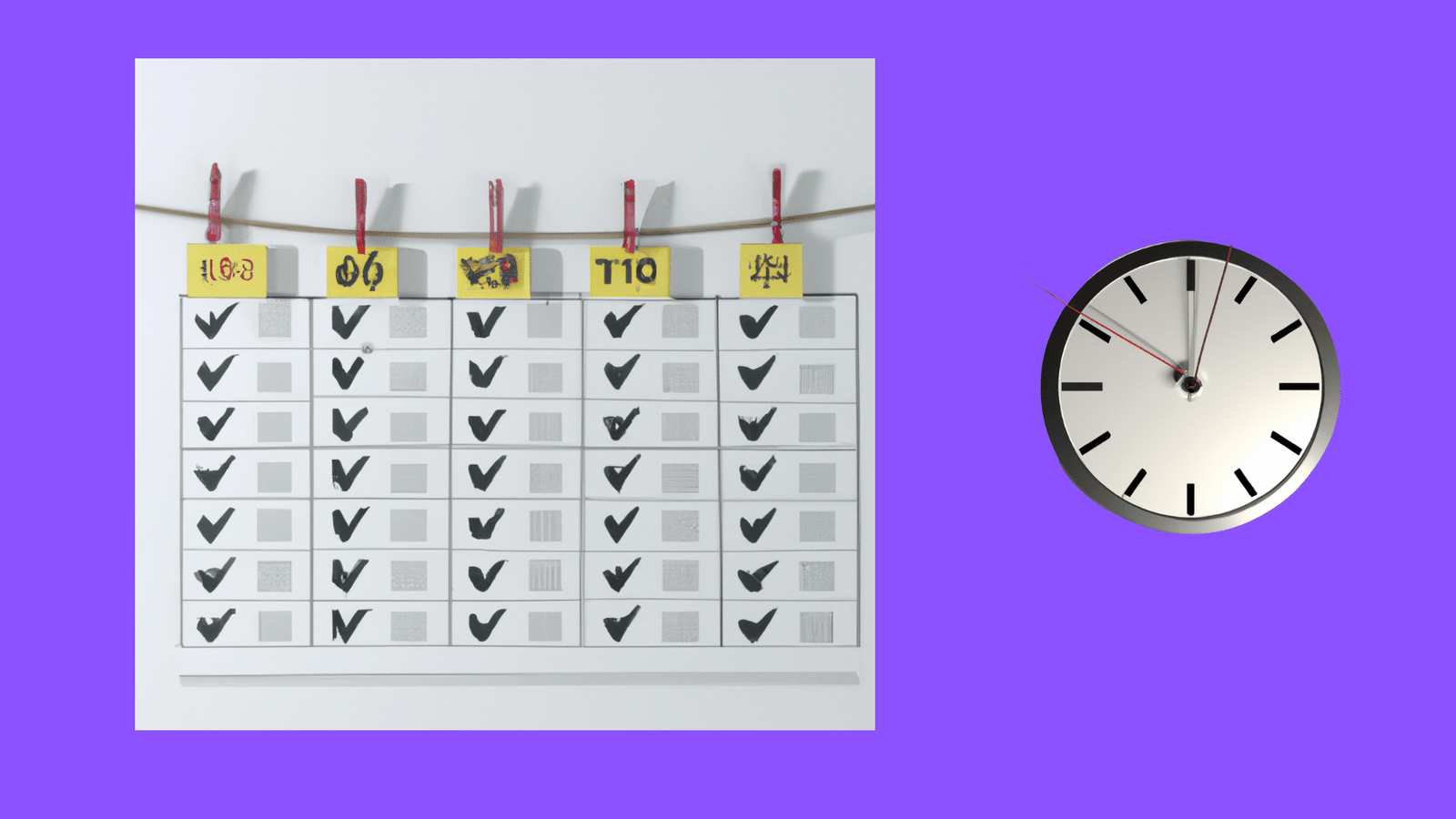In today’s fast-paced world, the concept of wishing for a better future often overshadows the necessity of taking actionable steps to realize one’s dreams
In today’s fast-paced world, the concept of wishing for a better future often overshadows the necessity of taking actionable steps to realize one’s dreams. Many individuals spend a considerable amount of time imagining the lives they desire, yet they often find themselves in a cycle of wishful thinking that leads nowhere. This phenomenon can result in stagnation and missed opportunities, ultimately hindering personal growth and fulfillment. The crux of the issue lies in the gap between aspirations and the actions required to achieve them.
Wishing is a passive activity; it is a state of longing without commitment to the effort needed to bring about change. Conversely, taking action involves dedication, effort, and a willingness to face challenges head-on. Transitioning from a mindset of wishing to one of doing is crucial for realizing potential and achieving goals. This shift can empower individuals to transform their dreams into actionable plans, propelling them forward in their personal and professional lives.
By understanding the dynamics between desire and action, one can unlock a pathway towards achievement. Embracing the notion that actions are the vehicle through which dreams become reality is essential. The journey begins with recognizing the importance of accountability; it involves crafting concrete plans that lay the groundwork for success. Each step taken toward implementing these plans contributes to building self-efficacy and the confidence necessary to pursue further ambitions.
This blog post aims to explore the transformative power of moving from wishing to doing, emphasizing the significance of action in transforming aspirations into tangible outcomes. By encouraging a proactive approach, we hope to inspire readers to take control of their lives and embark on the journey of turning dreams into realities.
Understanding the Difference Between Wishing and Doing
Wishing and doing represent two distinct approaches to achieving goals and realizing aspirations. Wishing is often characterized by an internal longing for something desirable, accompanied by a sense of hope or make-believe that the desired outcome will materialize without the necessity for tangible effort. This passive desire frequently leads individuals to daydream or fantasize about their goals without committing to any concrete steps toward realization. Consequently, wishing can promote stagnation and disappointment; it encourages the belief that outcomes can occur merely through desire rather than through action.
On the contrary, doing encompasses a proactive mindset, where individuals actively engage in pursuing their objectives through defined actions. This approach requires a thorough understanding of the necessary steps and actions required to move from mere desire to actual accomplishment. For example, a person who wishes to become physically fit might envision their ideal physique but may remain inactive, solely dreaming about this change. In contrast, someone who decides to pursue fitness will create a workout regimen, allocate time for exercise, and commit to a healthier diet. The initiative expressed through doing results in measurable progress, fostering a sense of accomplishment and motivation to continue.
A common pitfall that blurs the line between wishing and doing is the overindulgence in planning, which can create an illusion of progress while neglecting the essential component of execution. One may spend excessive time crafting elaborate plans or visualizing outcomes without ever taking the first step, thus reinforcing the cycle of wishing. This stagnation, if unaddressed, can lead to profound disappointment when goals remain unfulfilled. By recognizing the fundamental differences between wishing and doing, individuals can better channel their energies into effective action, paving the way towards fulfilling their dreams in an actionable manner.
The Risks of a Wishful Mindset
A wishful mindset can significantly hinder personal and professional growth, manifesting in various detrimental ways. First and foremost, the tendency to wish rather than act often leads to procrastination. While individuals may envision grand outcomes and dream about their future success, they frequently find themselves trapped in a cycle of inaction. The excitement generated by these thoughts can quickly diminish, replaced by a paralyzing fear of failure. In effect, this fear prevents them from taking the necessary steps to translate their aspirations into reality.
Moreover, the constant state of wishing can foster a sense of helplessness. When individuals rely solely on dreams without concrete plans, they might feel that their goals are unattainable. This mentality limits their ability to take initiative and diminishes their self-efficacy, further reinforcing their belief that they are incapable of change. Take, for example, someone who wishes to pursue a new career but repeatedly delays the requirement of updating their resume or networking. Over time, this individual may succumb to a fatalistic outlook, believing that their situation is beyond their control.
Real-life stories illustrate the pitfalls of a wishful approach. Consider a skilled artist who yearns to showcase their work in galleries but continually postpones developing a portfolio or applying for exhibitions. Years can slip by, leaving dreams unfulfilled while the artist clings to fleeting wishes. Likewise, another individual may desire to improve their health but finds solace in merely fantasizing about fitness, neglecting the necessary actions like diet changes and exercise. These examples underscore the urgency for action; without it, aspirations risk fading into mere illusions.
The Power of Setting SMART Goals
Setting goals is an essential part of achieving success in any area of life. One effective framework for goal-setting is the SMART criteria, which stands for Specific, Measurable, Achievable, Relevant, and Time-bound. This approach transforms vague aspirations into clear and actionable plans, thereby increasing the likelihood of success.
The first component, Specific, emphasizes the importance of defining a goal with clarity. Instead of saying, “I want to get fit,” a specific goal would be, “I will exercise for 30 minutes, five times a week.” This level of detail provides a clear direction and allows individuals to envision the exact steps they need to take.
Next is Measurable, which involves establishing criteria to assess progress. A goal such as “I want to save money” lacks measurability. However, transforming it to “I will save $200 each month for six months” allows one to track their savings effectively and see tangible progress over time.
The Achievable aspect ensures that the goals set are realistic and attainable. While it’s important to aim high, setting goals that are too ambitious can lead to frustration and discouragement. For example, rather than stating, “I will run a marathon next month,” a more achievable goal would be, “I will train to run a 5K in three months.” This maintains motivation and commitment.
The fourth component, Relevant, encourages individuals to align their goals with their broader life aspirations. This ensures that the goals resonate on a personal level, making them more meaningful and motivating. For instance, if someone wants to advance in their career, a relevant goal could be, “I will complete an online course related to my field in the next three months.” This connects the goal with larger career aspirations.
Lastly, the Time-bound element instills a sense of urgency and accountability. Goals should have a deadline to prevent procrastination and create a sense of commitment. A goal like, “I want to learn a new language,” can become time-bound by stating, “I will complete an introductory language course by the end of the year.”
When these components of SMART are effectively integrated into goal-setting, individuals are empowered to convert their dreams into clear, actionable plans. The SMART framework not only improves clarity and focus but also increases the likelihood of realizing one’s aspirations through targeted efforts.
Creating an Action Plan
Developing an action plan is a crucial step in transforming your dreams into tangible results. It allows individuals to create a structured approach that guides them toward their goals. To begin this process, it is essential to break down overarching aspirations into smaller, more manageable tasks. This decomposition not only makes the objectives less daunting but also enhances motivation as progress becomes noticeable with each completed task.
Once the goals have been segmented, the next step involves establishing clear deadlines for each task. Deadlines create a sense of urgency and help maintain focus, thereby significantly enhancing productivity. It is beneficial to set realistic timelines that consider potential obstacles while encouraging a steady pace towards achieving your goals. Creating a timeline allows for better monitoring of progress and can recalibrate efforts as necessary throughout the journey.
Additionally, prioritizing the tasks within the action plan is paramount. By identifying which actions are most critical or time-sensitive, individuals can allocate their resources effectively. This prioritization ensures that attention is directed toward the elements of the plan that have the greatest impact, allowing for a more strategic and efficient use of time and energy.
An equally important aspect of an effective action plan is its inherent flexibility. Life is inherently unpredictable, and circumstances frequently change, necessitating adjustments to the initial plan. Regular reassessment of both goals and strategies enables individuals to navigate obstacles and capitalize on new opportunities that may arise. This adaptability fosters resilience and encourages continuous progress toward fulfilling ambitions.
In summary, creating a well-structured action plan involves breaking down goals, establishing deadlines, prioritizing tasks, and maintaining flexibility. By employing this methodical approach, individuals can make steady advancements toward their dreams, ultimately transforming aspirations into actionable plans.
Overcoming Obstacles and Maintaining Motivation
Transitioning from wishing to doing can often be hindered by various obstacles that individuals face. Among these, fear and self-doubt are perhaps the most prevalent. Fear of failure can paralyze decision-making, preventing one from committing to actionable plans. To combat this, it is crucial to reframe the perception of failure as a learning opportunity rather than a setback. Engaging in positive self-talk and visualizing success can significantly mitigate feelings of apprehension, thus paving the way for action.
Self-doubt often stems from comparing oneself to others, leading to a cycle of inadequacy and hesitation. To overcome this challenge, individuals can establish realistic goals that align with their unique circumstances and capabilities. Breaking down larger aspirations into manageable tasks can foster a sense of accomplishment, bolstering self-esteem and motivation to continue pursuing one’s goals. Journaling progress and celebrating small victories can also help reinforce a positive mindset.
Furthermore, external barriers, such as lack of support or resources, can impede progress. Building a network of accountability partners can play a significant role in maintaining motivation. These individuals can offer encouragement, share experiences, and keep one focused on their goals. Additionally, resources such as workshops, online communities, and mentorship programs can provide valuable insights and tools to overcome challenges effectively.
Implementing a reward system can also serve as a motivational tool. By recognizing milestones, no matter how small, individuals can cultivate a sense of achievement that fuels further commitment to their plans. In conclusion, overcoming obstacles requires a multi-faceted approach that addresses both internal and external challenges, while maintaining motivation through support systems and effective strategies. This way, individuals can transform their dreams into actionable plans with resilience and determination.
Success Stories: From Wishes to Realities
Throughout history, many individuals have transformed their dreams into concrete realities through determination and strategic action. Their journeys illustrate that ambition, coupled with a well-structured plan, can yield remarkable outcomes. One such story is that of J.K. Rowling, whose desire to become an author faced numerous obstacles, including financial hardship and rejection from multiple publishers. However, she persevered by continuously refining her manuscript for “Harry Potter” until it finally found a publisher, becoming not only a beloved book series but also a cultural phenomenon. Rowling’s story demonstrates the power of resilience and the importance of unwavering commitment to one’s aspirations.
Another inspiring example is Howard Schultz, the former CEO of Starbucks. Schultz, who grew up in a working-class neighborhood, dreamed of creating a coffeehouse experience reminiscent of the espresso bars he encountered during a trip to Italy. Despite facing skepticism from investors, he meticulously crafted a business plan that emphasized quality, community, and customer experience. Starbucks’ unparalleled success transformed the coffee industry and exemplified how tangible planning and dedication can bring transformative ideas to life.
Rachel Hollis is yet another figure who turned her dreams into reality by building a successful brand from the ground up. After facing personal and professional challenges, she shared her journey of self-improvement and empowerment with others through best-selling books and motivational speaking. Hollis’s ability to connect with her audience and inspire them to take action illustrates how sharing one’s experiences can ignite change in others. These narratives are powerful reminders of the impact actionable plans can have, emphasizing that with focused efforts, what once seemed mere wishes can manifest into substantial accomplishments.
The key takeaways from these success stories are clear: dedication, strategic planning, and resilience are essential components of transforming dreams into realities. They serve as inspirations to anyone striving to bridge the gap between vision and achievable outcomes.
Building a Supportive Environment
A transformative journey begins with creating a supportive environment that fosters action-oriented mindsets. To achieve your dreams effectively, surrounding yourself with encouraging individuals can make a significant difference. Such people contribute positively to your perspective, providing motivation and reinforcement when you face challenges. This supportive network can include friends, family, or colleagues who resonate with your aspirations and can offer emotional backing when required.
Seeking mentorship is another crucial strategy. A mentor can serve as a guide, sharing valuable insights and experiences that can amplify your decision-making process. They can help refine your goals and offer constructive feedback on your journey towards achieving them. When choosing a mentor, select someone who not only understands your objectives but also embodies the principles you wish to emulate. Their experience can offer clarity and confidence as you transition from mere wishing to actionable planning.
Additionally, joining groups that inspire action can provide a sense of community and accountability. These groups, whether they are professional networks, interest-based clubs, or support circles, can serve as platforms for sharing ideas, resources, and encouragement. Engaging in discussions with like-minded individuals can also spark creativity and innovation, fueling the drive needed to move toward your goals. The collective energy generated within such environments can propel you to step out of your comfort zone and take decisive action.
Finally, embracing the importance of community in achieving goals cannot be overstated. A strong support system not only boosts morale but also reinforces commitment to your aspirations. As you navigate through obstacles, the allies you choose to engage with can profoundly influence your progress and determination. Cultivating such an environment will undoubtedly facilitate the necessary actions to convert your dreams into achievable plans.
Take the First Step Today
Throughout this blog post, the importance of transforming dreams into actionable plans has been emphasized as a pivotal step for achieving personal fulfillment. Merely wishing for a better future or hoping for dreams to manifest without taking any practical steps will not yield results. Dreams require a structured approach that involves actionable strategies, consistent effort, and a commitment to progress. By reframing the mindset from wishing to doing, individuals can create a pathway towards their aspirations.
One of the key takeaways is the significance of breaking down large ambitions into smaller, manageable steps. This approach not only makes the journey less daunting but also allows for measurable progress along the way. Setting specific goals and deadlines fosters accountability and gives individuals a clear direction, reducing the likelihood of procrastination that often accompanies wishful thinking.
Additionally, cultivating a supportive environment and surrounding oneself with like-minded individuals can greatly enhance motivation. Engaging in discussions, seeking advice, or even collaborating with others can foster inspiration and encourage one to take that crucial first step. Remember that progress is not a linear journey; setbacks and challenges are part of the process and can be valuable learning experiences.
Ultimately, the journey of turning dreams into reality begins with a single action. It is essential for readers to reflect on their aspirations and challenge themselves to take concrete steps today. The act of starting—no matter how small—is what distinguishes the dreamers from those who achieve their goals. By committing to action over wishful thinking, individuals empower themselves to create a fulfilling life aligned with their dreams.









